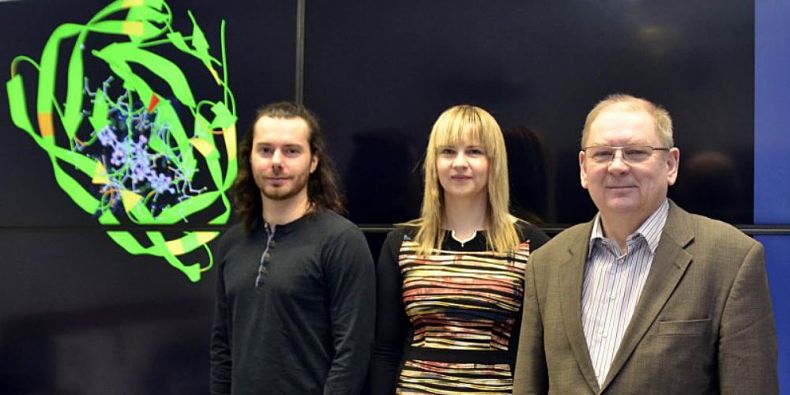A new software application that works as a virtual microscope for molecules and molecular complexes was developed by David Sehnal from Jaroslav Koča’s research group at CEITEC Masaryk University and National Centre for Biomolecular Research of the Faculty of Science MU. This breakthrough software is called LiteMol suite. It enables users to study molecules in detail - for example examine how drugs bind to receptors, or show an individual iron atom in haemoglobin. The article on LiteMol suite has been published in the prestigious journal Nature Methods.
The long-term focus of research coordinated by Radka Svobodová within Jaroslav Koča’s group is on structural bioinformatics, where the above-mentioned program is the culmination of several years of work. LiteMol provides an interactive web browser-based visualisation of biomacromolecular structures or their extremely large biological complexes. Scientists from Palacký University in Olomouc and from the European Molecular Biology Laboratory (EMBL) in the United Kingdom have also collaborated on the final version of the software.
In addition to interactively visualizing molecular structures, LiteMol can also overlay them with underlying experimental data and biological context annotations. The experimental data indicate the accuracy with which the structure was observed. The annotations then contain important biological system information, for example, the locations of frequent mutations or binding sites of drugs. This information makes it possible to examine where drugs enter an active part of a molecule or how a virus can recognize a host cell.
The technology of LiteMol suite is based on four main components: two data delivery services (CoordinateServer and DensityServer), a compression format (BinaryCIF) and an effective 3D molecule viewer (LiteMol Viewer).
LiteMol suite is a freely available software package and it is already actively used throughout the scientific community. It became a visualising tool in the Protein Data Bank (PDB) in which scientists gather all data on biomacromolecular structures and which currently contains more than 130,000 structures. LiteMol suite is integrated into the European PDB operated by EMBL and its future extension to the American and Japanese PDB is being considered. Furthermore, LiteMol suite was integrated into the services operated by the Swiss Institute of Bioinformatics (SIB) and the French National Centre for Scientific Research (CNRS).
The software works well on both desktop computers and mobile devices. As scientists themselves confirm, the best ideas often come to them at conferences or in their free time.
